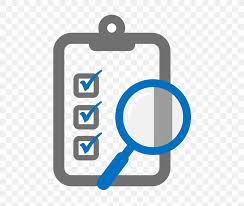15 Strategic Imperatives for Amplified Lead Generation and Customer Acquisition
In the contemporary competitive business landscape, effective lead generation and customer acquisition are not merely beneficial, but absolutely paramount for sustained growth and profitability. These processes represent the lifeblood of any organization, fueling expansion and ensuring long-term viability. This article delves into 15 strategic imperatives, enriched with practical applications and underpinned by established marketing principles, designed to empower businesses to enhance their lead generation and customer acquisition endeavors.
Lead generation, at its core, is the process of attracting and converting prospects into individuals who have indicated interest in your company’s product or service. Customer acquisition, on the other hand, encompasses the methodologies employed to convert these interested prospects into paying customers. Both are intricately linked and require a holistic, strategic approach.
1. Crafting Compelling Content: The Cornerstone of Attraction
Content marketing serves as a foundational pillar for attracting potential customers. Creating and distributing valuable, relevant, and consistent content is a strategic approach to attract and retain a clearly defined audience — and, ultimately, to drive profitable customer action. For instance, a cybersecurity firm could publish a series of white papers and blog posts detailing emerging threat landscapes and mitigation strategies, thereby attracting businesses seeking to bolster their defenses. This leverages the principle of providing value upfront, establishing the company as a thought leader and trusted resource. As exemplified in Unlocking Effective Communication: A Guide to Clarity and Conciseness, clarity and value are key to resonating with your audience.
2. Website Optimization: Enhancing User Experience and Search Visibility
A company's website often serves as the initial point of contact for potential customers. Search Engine Optimization (SEO) is indispensable, enhancing visibility in search engine results pages (SERPs). This involves employing relevant keywords, optimizing website architecture for seamless navigation, and ensuring mobile responsiveness. Equally crucial is Conversion Rate Optimization (CRO), which focuses on refining website elements to maximize the percentage of visitors who complete a desired action, such as filling out a form or making a purchase. For example, A/B testing different call-to-action button designs can reveal which version yields higher conversion rates. A well-optimized website, underpinned by principles of usability and persuasive design, becomes a powerful engine for lead generation.
3. Strategic Use of Freebies: Incentivizing Engagement
Offering valuable resources for free, often termed "lead magnets," is a highly effective technique for capturing leads. These can take various forms, such as e-books, templates, checklists, or free software trials. The key is to provide something of genuine value that addresses a specific pain point or need of the target audience. This aligns with the reciprocity principle, a social psychology tenet that suggests people are more likely to reciprocate when they receive something of value. A project management software company, for instance, might offer a free project planning template in exchange for contact information. This demonstrates value, encourages engagement, and paves the way for future interactions.
4. Social Media Amplification: Engaging and Targeting Your Audience
Social media platforms offer unparalleled opportunities to connect with target audiences, disseminate content, and execute precisely targeted advertising campaigns. Social media marketing involves creating engaging content tailored to specific platforms, fostering community interaction, and utilizing social listening to understand customer sentiment and identify emerging trends. For example, a travel agency could leverage Instagram to showcase stunning travel photography and run targeted ads to individuals interested in adventure travel. The effectiveness of social media marketing hinges on a deep understanding of audience demographics, psychographics, and platform-specific best practices.
5. Email Marketing: Nurturing Leads and Driving Conversions
Email marketing remains a potent tool for nurturing leads and guiding them through the sales funnel. This involves building an email list of interested prospects and sending them regular newsletters, promotional offers, and valuable content. Personalization is key, leveraging data to tailor messaging to individual preferences and behaviors. Marketing automation platforms enable businesses to segment their email lists, automate email sequences, and track engagement metrics. A key element discussed in Communication Excellence: Strategies for Clarity and Impact, is to ensure your message is clear, concise, and impactful.
6. Webinars and Live Events: Showcasing Expertise and Building Relationships
Hosting webinars and live events offers a unique opportunity to showcase expertise, engage directly with potential customers, and build relationships. These events can take various forms, such as online workshops, industry conferences, or product demonstrations. The key is to provide valuable insights, answer audience questions, and create a memorable experience. For instance, a data analytics company could host a webinar on "Leveraging Big Data for Business Intelligence" to attract data-driven professionals. Webinars and live events not only generate leads but also establish the company as a thought leader in its industry.
7. Influencer Collaboration: Leveraging Authority and Reach
Influencer marketing involves partnering with individuals who have a significant following and influence within a specific industry or niche. These influencers can promote your products or services to their engaged audience, driving brand awareness, leads, and sales. The key is to identify influencers who align with your brand values and target audience. For example, a sports apparel company could collaborate with fitness influencers to promote their latest line of athletic wear. Influencer marketing leverages the principles of social proof and authority, as consumers are more likely to trust recommendations from individuals they admire and respect.
8. Referral Programs: Harnessing the Power of Word-of-Mouth
Referral programs incentivize existing customers to refer their friends, family, or colleagues to your business. This not only brings in new customers but also strengthens customer loyalty. Incentives can take various forms, such as discounts, rewards, or exclusive access to new products or services. Referral programs leverage the power of word-of-mouth marketing, which is widely regarded as one of the most effective forms of marketing. People are more likely to trust recommendations from people they know and trust, making referral programs a cost-effective and highly efficient customer acquisition strategy.
9. Paid Advertising: Amplifying Reach and Targeting Precision
Paid advertising encompasses a range of online advertising channels, such as Google Ads, social media advertising, and display advertising. These platforms enable businesses to target specific demographics, interests, and behaviors, ensuring that their ads are seen by the most relevant audience. The key is to create compelling ad copy, optimize landing pages for conversions, and continuously monitor and refine campaigns to maximize return on investment (ROI). Paid advertising offers unparalleled reach and targeting precision, making it an essential component of a comprehensive lead generation and customer acquisition strategy.
10. Community Engagement: Establishing Authority and Building Trust
Engaging with online communities and forums where your target audience congregates is a powerful way to establish yourself as a trusted authority in your industry. This involves actively participating in discussions, providing expert advice, and building relationships with community members. The key is to provide value without being overly promotional. For example, a web design agency could participate in web development forums, offering advice and insights to aspiring designers. Community engagement not only generates leads but also builds brand awareness and establishes the company as a reputable resource.
11. Lead Magnets: Attracting Potential Customers with Value
Implementing lead magnets strategically can significantly boost lead generation efforts. By offering valuable resources or exclusive content in exchange for visitors' contact information, businesses can effectively capture leads and expand their reach. A Strategic Roadmap: Empowering Nonprofits for Mission Achievement can be used by non-profits as an example of a lead magnet. For instance, a marketing agency might offer a free social media audit in return for email addresses. This targeted approach ensures that the leads generated are genuinely interested in the company's offerings.
12. Collaborative Partnerships: Expanding Reach and Access
Partnering with complementary businesses offers a mutually beneficial way to cross-promote each other's products or services. By aligning with businesses that serve a similar target audience but offer non-competing products, companies can expose their brand to a new pool of potential customers. For example, a bakery could partner with a local coffee shop to offer joint promotions, driving traffic to both businesses. This collaborative approach leverages the existing customer base of both businesses, resulting in increased customer acquisition.
13. Customer Testimonials: Building Trust and Credibility
Displaying testimonials and reviews from satisfied customers on a company's website and social media platforms is crucial for building trust and confidence. Positive feedback serves as social proof, reassuring potential customers that the brand is reliable and delivers on its promises. Encouraging customers to share their experiences and highlighting their positive reviews can significantly influence purchasing decisions. Customer testimonials are a powerful tool for converting leads into paying customers.
14. Exceptional Customer Service: Creating Brand Advocates
Providing outstanding customer service is essential for creating positive experiences and fostering customer loyalty. Customers who feel valued and supported are more likely to become brand advocates, recommending the business to their friends and family. Investing in customer service training and implementing efficient support systems can lead to increased customer satisfaction and, consequently, word-of-mouth referrals. Exceptional customer service is a sustainable lead generation tool that cultivates long-term relationships with customers.
15. Analytics and Optimization: Data-Driven Decision Making
Continuously analyzing lead generation and customer acquisition efforts is crucial for identifying areas for improvement. Tracking key metrics such as conversion rates, cost per lead, and customer lifetime value allows businesses to make data-driven decisions and refine their strategies. By leveraging analytics tools and regularly monitoring performance, companies can optimize their campaigns for maximum ROI. This iterative process of analysis and optimization ensures that lead generation and customer acquisition efforts remain effective and efficient.
Conclusion and Recommendations
In conclusion, successful lead generation and customer acquisition hinge on a multifaceted strategy that integrates compelling content creation, website optimization, targeted social media engagement, and personalized email marketing. Embracing these 15 strategic imperatives, while adapting them to the unique nuances of your industry and target audience, will significantly enhance your ability to attract, nurture, and convert leads into loyal customers. Furthermore, a commitment to exceptional customer service and continuous data-driven optimization is essential for sustaining long-term growth and success. Future research should focus on the evolving landscape of digital marketing, particularly the impact of artificial intelligence and machine learning on lead generation and customer acquisition strategies. As explored in Overcome Fear of Failure: A Practical Guide to Risk-Taking and Confidence, adaptability and a willingness to experiment with new approaches are crucial for staying ahead in the competitive business environment.
Related Articles
- Unlocking Effective Communication: A Guide to Clarity and Conciseness
- Communication Excellence: Strategies for Clarity and Impact
- Strategic Roadmap: Empowering Nonprofits for Mission Achievement
- Overcome Fear of Failure: A Practical Guide to Risk-Taking and Confidence
Reader Pool:
In what ways can businesses leverage emerging technologies like augmented reality (AR) or virtual reality (VR) to create more immersive and engaging lead generation experiences for potential customers?
```




